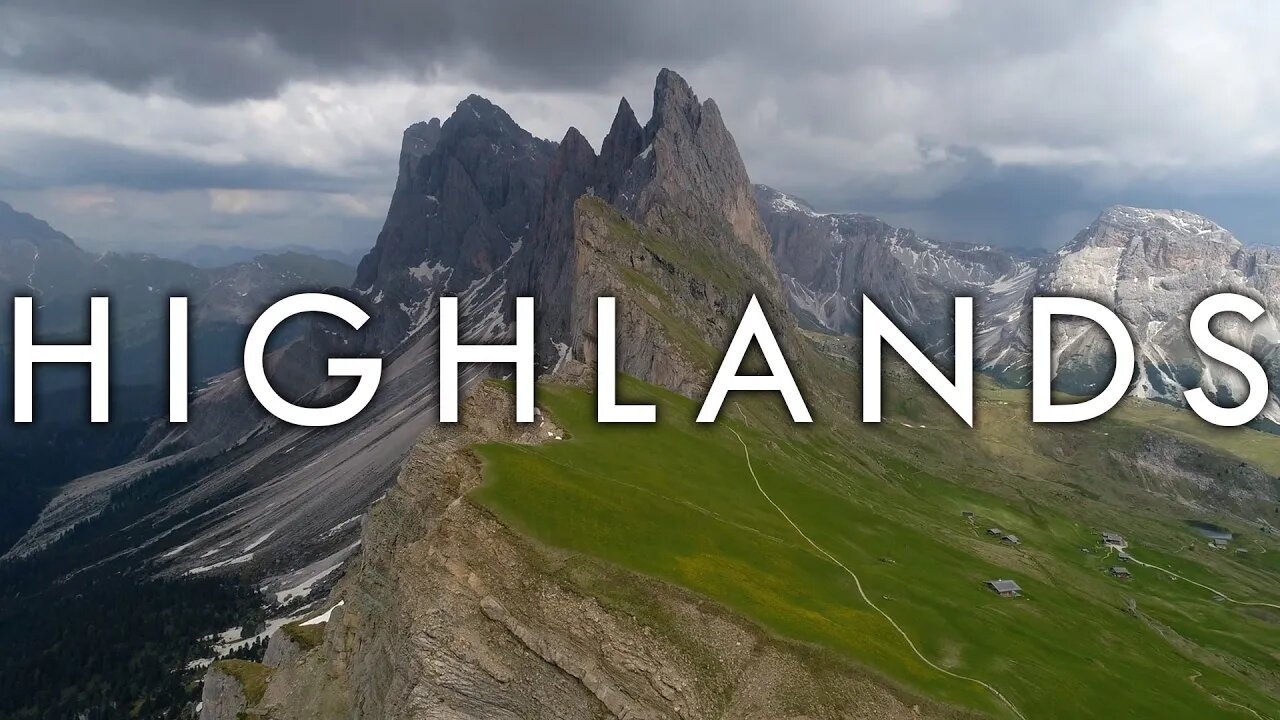Premium Only Content

Highlands - Montane Forests, Alpine Meadows, Tropical Moorlands - Biomes#10
What happens when you take one of the many sea-level biomes that we've looked at in this series, and climb into the mountains? How does cooling temperatures affect the type of plants that can grow. The answer varies depending upon whether you're in the tropics, or temperate regions, whether the conditions are wet or dry. Join me as I explore the most spectacular scenery on our planet - the Highlands of Earth.
⛰🏔🗻
🕐TIMESTAMPS🕖
👉0:00 Opening Montage
👉1:01 Introduction and Titles
👉2:09 Altitude and Temperature
👉3:05 Effect of Altitude on Biomes
👉4:55 Polar Ice
👉6:36 Subarctic Highland Tundra
👉7:20 Wet Temperate Highland Biomes
👉8:49 Dry Highland Biomes
👉10:11 Tropical Montane Forest and Moorland
👉13:40 Mount Kilimanjaro - The World In Miniature
👉14:45 Outro
⛰🏔🗻
As one rises in altitude, the air temperature drops. So when you take a sea-level biome, and climb into the mountains, this has the effect of pushing the biome toward the poles in equivalent latitude. For instance, broadleaf forest in temperate latitudes turns to coniferous forest like taiga.
⛰🏔🗻
At the poles, the ice at sea-level is just more ice at altitude. But in the arctic tundra, only small rises in altitude lead us into ice glaciers. The subarctic boreal forest will turn to tundra and then ice over relatively small hills, as a tree-line develops. Above this tree-line, found in most biomes, the summer temperatures are insufficient to permit tree-growth.
⛰🏔🗻
In temperate latitudes, wet biomes such as grassland and broadleaf or mixed forest turn to coniferous forests on mountain slopes, and above the tree line, alpine meadows, and then glaciers if the mountains are particularly high.
A similar pattern occurs in dry biomes such as scrub or semi-desert, in that slopes are forested as less evapotranspiration in the cooler temperatures permits the growth of trees over shrubs. Only very dry deserts such as the Atacama or the heart of the Sahara skip the forested layer as conditions are too dry even for trees to grow in the cooler upland areas.
⛰🏔🗻
But it's in the tropics that we find the most interesting effects on biomes at altitude. For here there are low variations in seasonal temperatures, and this leads to unique species of trees, succulents, palms etc. to grow within and above the now very high treeline.
⛰🏔🗻
FURTHER READING:
Additional charts, maps and images along with the narrative script - click here:
👉 https://geodiode.com/biomes/highlands
⛰🏔🗻
📷📹🎥 VIDEO & PHOTO CREDITS ❤️❤️❤️
http://geodiode.com/biomes/highlands#credits
⛰🏔🗻
Please support the development of this channel by remembering to 👍 Like, 🔁 Share and 🔴 Subscribe.
You can also support the production of series like this by becoming a monthly sponsor with Patreon for as little as $2/month 👉 https://patreon.com/geodiode 🥰
Research and Media Procurement Assistance: Richard Torres
Narrated, Written and Produced by
B.J.Ranson
You can contact me via the website at 👉 https://geodiode.com/contact
Or you can send an email via this Youtube Channel page 👉 https://www.youtube.com/channel/UC1raaXFgsFBSFR8qNgchF2g/about
-
 26:56
26:56
Geodiode - Exploring Our World Through Video
2 years ago $0.05 earnedThe History of Scotland
7221 -
 13:09:56
13:09:56
LFA TV
22 hours agoBREAKING: CHARLIE KIRK ASSASSINATED - WEDNESDAY 9/10/25
371K125 -
 1:31:08
1:31:08
I_Came_With_Fire_Podcast
8 hours agoCheck Fire: God Bless Charlie Kirk
86.7K24 -
 1:13:35
1:13:35
Glenn Greenwald
10 hours agoCharlie Kirk Assassinated; NATO Alleges Russian Drones Flew Over Poland, and More | SYSTEM UPDATE #512
284K296 -
 1:46:28
1:46:28
Badlands Media
1 day agoAltered State S3 Ep. 45: The Assassination of Charlie Kirk
160K28 -
 8:56:53
8:56:53
Dr Disrespect
17 hours ago🔴LIVE - DR DISRESPECT - THE FINALS - NEW SEASON 8 LAUNCH EVENT W/ THE SHOTTY BOYS
285K11 -
 27:00
27:00
BonginoReport
11 hours agoRest In Peace Charlie Kirk - Nightly Scroll w/ Hayley Caronia (Ep.131) - 09/10/2025
265K410 -
 1:20:06
1:20:06
Kim Iversen
12 hours agoRIP Charlie Kirk: When Words Fail, They Reach for Guns
189K341 -
 2:47:04
2:47:04
DDayCobra
13 hours ago $18.29 earnedCharlie Kirk SHOT
159K63 -
 1:14:30
1:14:30
Redacted News
12 hours agoBREAKING! CHARLIE KIRK SHOT BY ASSASSIN IN UTAH, TRUMP CALLS FOR NATIONAL PRAYERS
335K532